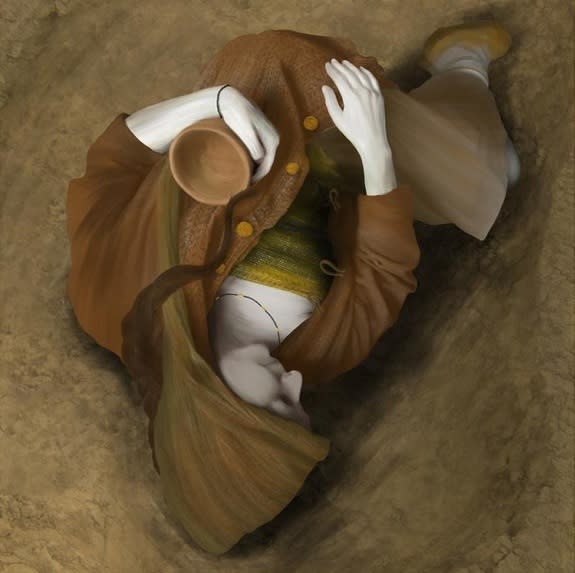Gold-Bedecked Skeleton May Have Been Ancient Queen
More than 4,000 years ago, a woman, perhaps an ancient queen, was carefully laid to rest outside of modern-day London, ornamented with beads of gold strung around her neck and a large drinking cup placed at her hip. Archaeologists have just uncovered her grave at a quarry that lies between Windsor Castle and Heathrow airport.
The gold ornaments suggest the woman was important, possibly of the elite and even a princess or queen, the excavators said.
The woman's bones have been degraded by acid in the soil, making radiocarbon dating and DNA analysis impossible. Nonetheless, excavators believe she was at least 35 years old when she died sometime between 2500 B.C. and 2200 B.C., around the era Stonehenge was constructed.
The woman was adorned with a necklace that had tube-shaped beads fashioned out of sheet gold and black disks of lignite, a dark, coal-like material similar to jet. Though her clothing long ago disintegrated, amber buttons and fasteners were scattered across the woman's body in a row, hinting at how she may have been dressed. [8 Grisly Archaeological Discoveries]
The excavation team believes she belonged to the Beaker people, a widespread Neolithic culture that gets its name from the shape of the ceramic pots they left behind. Beaker remains have been found across Europe, but few in Britain have been found with gold ornaments and most contain male skeletons, excavators say.
"It is interesting to think who this woman was within her community," Gareth Chaffey, who has been directing excavations at the site for Wessex Archaeology, said in a statement. "She was probably an important person in her society, perhaps holding some standing which gave her access to prestigious, rare and exotic items. She could have been a leader, a person with power and authority, or possibly part of an elite family — perhaps a princess or queen."
A good indication of her status might be her jewelry, which was made from materials that were not exactly locally sourced. Analyses showed that the gold likely came from Ireland or southern England and the amber pieces may have originated eastern England or as far away as the Baltic, researchers say.
Wessex Archaeology has been conducting rescue excavations at the quarry in the village of Horton, while the building materials-company CEMEX is extracts sand and gravel. Besides the Beaker burial, archaeologists at the site have found a wide range of ancient remains, from late Ice Age flint tools to post-medieval pig burials. The companies hope the recent finds will end up in a local museum.
Follow Megan Gannon on Twitter and Google+. Follow us @livescience, Facebook & Google+. Original article on LiveScience.com.
Copyright 2013 LiveScience, a TechMediaNetwork company. All rights reserved. This material may not be published, broadcast, rewritten or redistributed.



